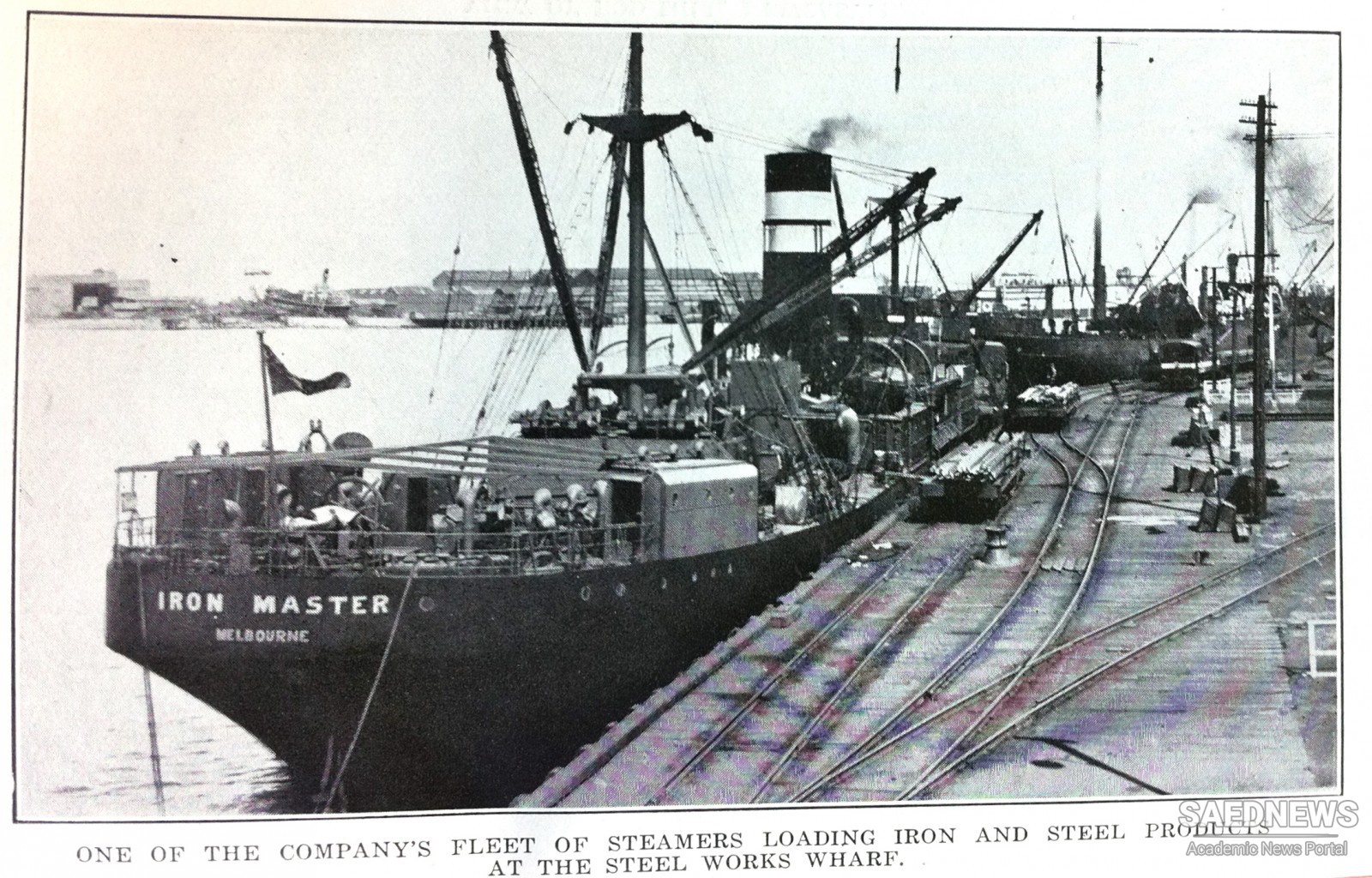Steamboats of iron, and engines for steamers, opened up a whole new market for the iron trade. But the biggest new market of all was that provided by the railways. The efforts of Richard Trevithick, George Stephenson and others, helped by the ironmakers, who produced wrought iron rails to stand the heavy loads, made railways a practicable proposition. The first half of the nineteenth century saw tremendous railway expansion.
Up to about 1850 wrought iron was still the king of metals and by far the greatest amount was made by Hall’s puddling process. Each puddling furnace was operated by two men—a puddler in charge of an underhand or assistant who was often learning the job (see Figure 2.2). A furnace charge of about 250kg (550lb) of pig iron took about two hours to work up to wrought iron and then the process started all over again. As the men worked for 12-hour shifts, each furnace produced about 1500kg (3300lb) of wrought iron per shift. It was not a very big output compared with what the mild steel makers were to achieve later (see p. 169), but the needed quantities were obtained by having large numbers of puddling furnaces. There are no official records for wrought iron production in the middle of the nineteenth century but it has been estimated that in 1852 the British output was about 1,270,000 tonnes. Sizes of wrought iron works varied considerably. Some had only a few puddling furnaces, others had as many as a hundred—but size was the only real difference between the various works: they were all very much the same otherwise, and up to a certain point in the manufacture the process was also the same. However, there were now several different grades, or qualities, of wrought iron in production. The wrought iron balls as they came from the furnace were always hammered out into a bloom, but the next stage depended on the grade of iron being made.
For the first grade—merchant, or common iron—the balls were rolled out to bars. These were cut up into short pieces, put together in a cube-shaped block, reheated and rolled out to the finished shape and size required. There had been changes in this part of the works. The old water-powered hammer had, of course, given way to the steam-driven hammer—known as a helve. This, in turn, had been superseded in most works by the direct-operating steam hammer invented by James Nasmyth in 1839. Merchant iron was good enough for many purposes. A large part of the output went to iron merchants all over the country—which is the reason for the name—and for export. For some applications a better quality was needed, and merchant iron was processed to provide it.
Up to a point, wrought iron improves as it is reprocessed. It becomes tougher and stronger and more able to resist shocks and stresses. Merchant iron was reheated and rerolled to produce ‘Best’ iron and ‘Best’ iron was treated in the same way to produce ‘Best Best’ (or BB) iron. A few firms went even further and made ‘Best Best Best’ (or BBB) iron. Iron used to make, say, a fence, need not be of such high quality as that used to make the piston rod of a steam engine. Iron for such things as steam boilers, for the axles of railway engines, for chains used in collieries and for anchoring ships, had to be of good quality. There had been improvements, too, in the rolling of iron. More sizes and shapes were now available, and their accuracy and consistency were better.
One important fact must be noted, however. Although power had been applied very widely in all branches of the iron industry, it was still used only for tasks that were beyond human muscle power. At the blast furnace, for example, men shovelled ore and coke into the charging barrows. Steam power then hoisted the barrows to the furnace top, where the men took over again, wheeled the barrows to the mouth of the furnace and tipped the contents in. At the pig beds the cast iron pigs, when solid but not cold, were broken off the sows by a man using a heavy sledgehammer or a long iron bar, walking on the hot iron. When the pigs, each of up to 50kg (110lb) were cold, they were lifted by hand from the pig bed and wheeled away. The only steam power at the blast furnaces was for providing the blast and hoisting the barrows; and in the wrought iron works the same applied. Steam drove the hammer and the rolling mills and operated cutting machines (or shears) for cutting the rolled iron to length. Everything else was done by hand, including feeding the red-hot iron to the rolling mills. An ironworker had to be strong and agile, and prepared to work long hours in hazardous conditions.


 The Industrial Iron Age: 1800-1850
The Industrial Iron Age: 1800-1850














































